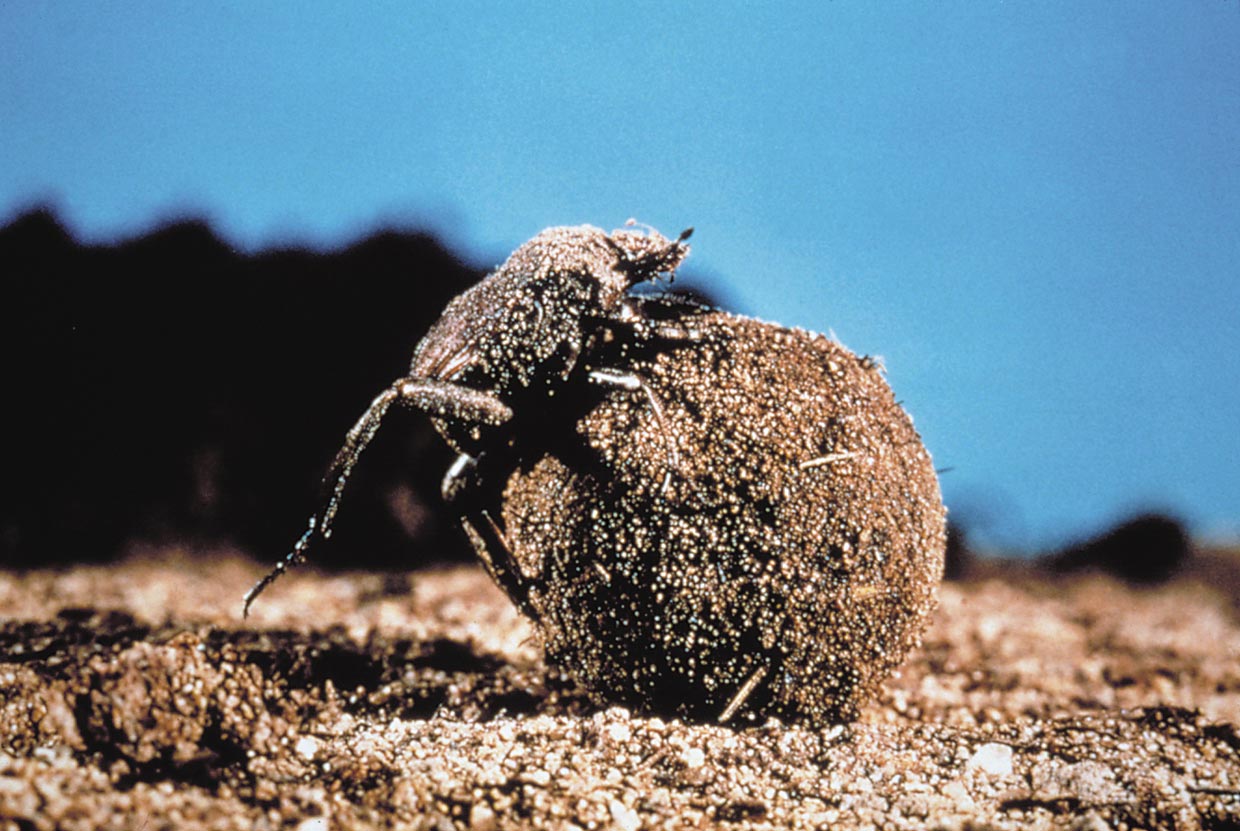Learning module:
Landforms and landscapes Defining Moments
Introduced species
2.4 Can we solve the poo problem? Cows and dung beetles

In 1788 when the ships of the First Fleet landed in Australia they brought seven ‘dangerous’ animals — five cows and two bulls.
The people who brought the cattle did so because they were a well-known and important source of milk, meat, muscle power and hides. Cattle were part of their lives and they believed the cattle were essential to creating a liveable environment in the new colony.
Of course people did not realise it, but these animals would have a huge impact on the Australian environment. One of the ways they had an impact was through their poo.
How could cow poo be a problem for Australian landscapes?
The first cow stepped ashore on Australian soil on 26 January 1788, and it pooed.
This did not seem to be a great problem unless somebody stepped in it.
However there was an even greater problem because, as there had never been cattle in Australia before, there were no insects that could break down cow poo. There were native insects that had evolved with native animals and that could break down things like kangaroo, wallaby and wombat poo, but not the much larger and wetter cow pads.
Cow pads would take months or even years to break down in natural conditions.
The poo created four problems for the landscapes occupied by large numbers of cattle:
- The poo covered part of the soil, so nothing would grow under it.
- The grass that grew at its edges would not be eaten by other cows.
- Bush flies and parasites bred in huge numbers in the poo — some of them carrying diseases that could infect animals and people.
- The slow breakdown of the poo meant that nutrients were not being returned to help the soil.
All this did not matter much when there were a few cows, or a few hundred, or even a few thousand. But there were real problems when there were over 20 million cows spread all over Australia, each pooing 10–12 times a day, and with every pat able to produce up to 3000 bush flies every two weeks.

One solution could be to get rid of cattle from Australia. That would solve the problem, but it would create other problems.
1. What might these problems be?
Perhaps people could be employed to pick up the poo? That might work, but it would be expensive, and wouldn't solve the problem of what to do with all the poo collected.
2. What other ideas can you think of to manage this extra excrement?
To find out what was done read the Defining Moment in Australian history: 1968 ‘One of God’s gifts to us as humans’ — Dung beetles introduced and answer the questions below.
3. What is a dung beetle?
4. Here are six stages that explain how dung beetles use poo as part of their life cycle. Place them in the correct order.
The benefits of this process were:
- the beetles aerated (brought air into) the soil
- this would help water to get through the soil
- there would be less poo for the flies to breed in
- any parasites in the poo would be killed
- the worm poo would help enrich the soil.
The problem was: what if the introduced beetles negatively impacted other parts of the native environment or plants, animals or insects? What if local birds did not eat them — we might have billions of dung beetles everywhere (as happened with cane toads — see Investigation 2.5).
Many different beetles were imported for trials, and the most successful ones came from Africa. The scientists discovered that different beetles responded differently to different conditions, so they have continued to study the beetles and introduce new ones that they have worked out will be most successful in specific places. This process is continuing today. The most recent beetle has been brought from France.
Conclusion
8. What does this case study help you understand about the way landscapes have been managed over time in Australia?















